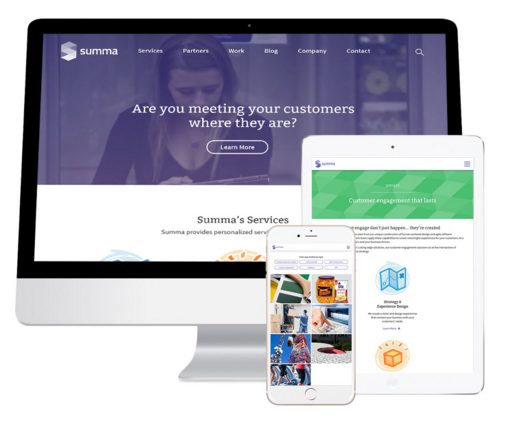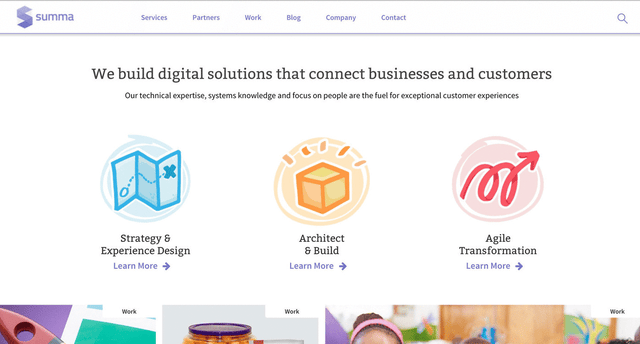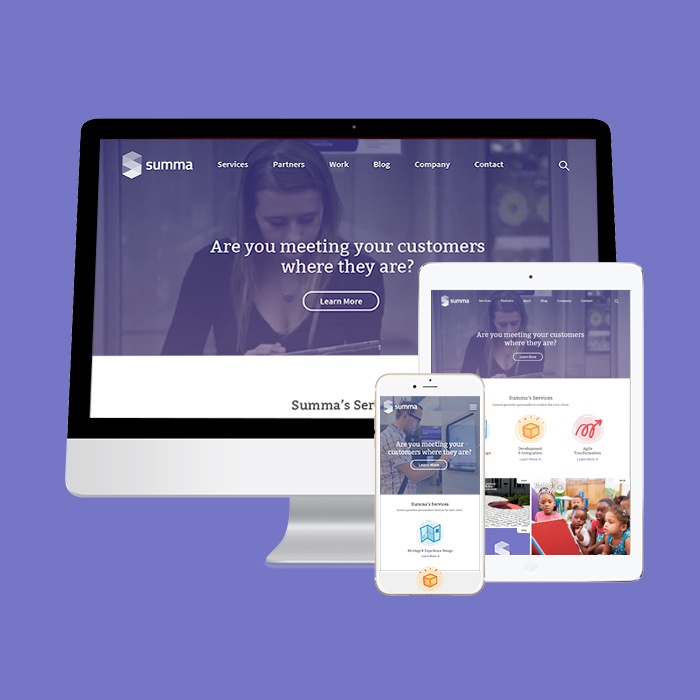How do you design a website that delivers nothing less than your true brand experience?
We recognize the power of the website as a branding tool, but it’s easy to try too hard to little effect and end up delivering under par. So we turned to our own tools that we use to solve our clients’ problems.
When we create digital interactions for Summa clients, we first work to define their needs by understanding their customers, organizing key information, and developing user journey maps. The methods we use include interactive workshops, user research, competitive analysis, and mapping the information space. We used these same methods for ourselves when we recently rolled out the new Summa website, and thought you might enjoy a closer look at four central design goals that guided our work.
1. Meet Users Where They Are
We don’t control how or when users access a website. The way in which users come into contact with content today has evolved with mobile usage surpassing desktop. When designing for the new website, we wanted to improve the user experience across devices and browsers through a responsive website. We accomplished it by:
- Starting with a site evaluation while looking at Google Analytics to understand what devices the users had accessed the original website from.
- Creating a seamless experience by considering multiple screen sizes and unique elements for each platform.

2. Find Content Faster
To improve the user experience, we eliminated or combined pages to present information in a quick and accessible way. We aimed to:
- Keep the navigation as flat as possible across the website, limiting sections to two levels deep. This also required some content editing from our previous site to create focus.
- Create a clean navigation without nested levels that require recall; this simplicity helps visitors avoid information overload as they define their own journey.
- Provide related content at the bottom of pages to encourage opportunistic browsing.
- Write short, interesting content to help visitors get the core of the information quicker.

3. Highlight Customers’ Successes
Throughout the site, we talk less about us and more about how we’ve helped others. Visitors see stories about the wide range of work we’ve done with our clients and how we’ve helped their customers. We’re sharing the work in ways that:
- Enable the sorting of stories by different categories.
- Provide dedicated pages for each customer story.
- Showcase the process, various stages of the project, and the final product.

4. Express Our Personality
At Summa, we are proud of our combination of technology expertise, design, creativity, business insights, and fun. To showcase this on the website, we used a variety of techniques. Some examples include:
- Creating custom icons for our services and areas of expertise. These icons represent key aspects of our work while highlighting our personality through their hand-drawn look.
- Developing animations and kinetics to connect with visitors, such as the animation of our logo when you roll over it to return to the homepage.
- Building in ways to showcase additional content, such as pop-up examples on the Strategy & Experience Design page.
- Writing content with a fun and engaging voice that is in keeping with our style.

These are just some of the goals that we established as beacons for our work after defining the essence of our brand and working with key stakeholders to define our goals. If you’d like to learn more about our Strategy and Experience Design capabilities, contact the Summa team.
To learn more about our brand identity redesign, read our blog article here.




